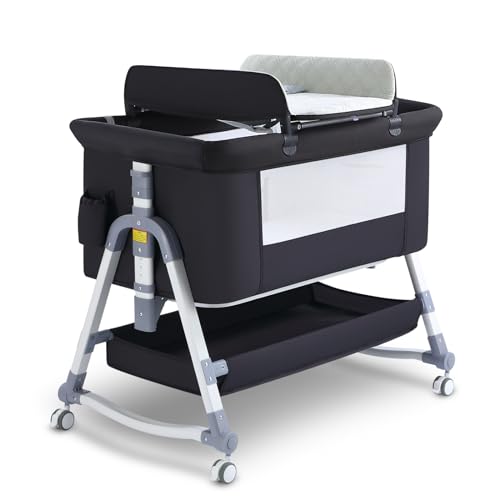This company has no active jobs
0 Review
Rate This Company ( No reviews yet )
Something About Company
Is Baby Cot To Bed Really As Vital As Everyone Says?
Transitioning from Baby Cot to Bed: A Comprehensive Guide for Parents
The journey from a baby cot to a bed marks a substantial milestone in a child’s advancement. It symbolizes independence and an action toward maturing. However, this shift can often be daunting for both parents and kids. Understanding the process, the ideal timing, and how to make the shift smoother can significantly help in this journey. This short article explores the vital to consider when transitioning your kid from a cot to a bed, including common FAQs, suggestions, and a structured strategy to ensure the process is as seamless as possible.
Why Transition from a Cot to a Bed?
Developmental Milestones
Transitioning to a bed is usually prompted by numerous elements:
-
Physical Growth: As kids grow, they outgrow their cots. The average size for a convertible cot is usually suggested for babies as much as 3 or 4 years of ages.
-
Cognitive Development: As toddlers end up being more curious and mindful of their surroundings, they might attempt to climb up out of their cots, posturing safety dangers.
-
Potty Training: Once a child is potty trained, they may require simpler access to the bathroom, which a bed can assist in.
-
Brother or sisters: The arrival of a new brother or sister can likewise demand this shift, as the cot might require to be freed up.
When to Make the Transition
There is no one-size-fits-all answer to when a kid need to shift from a cot to a bed. However, here are some indications that it may be time:
- Climbing Out: If the kid is trying to climb out often.
- Age Consideration: Many professionals advise this shift around the age of 2 to 3 years, although every child is unique.
- Required for Independence: Children might reveal a desire for a big-kid bed.
Types of Beds Suitable for Toddlers
Not all beds are created equal when it comes to children. Here’s a breakdown of suitable bed types:
| Bed Type | Description | Pros | Cons |
|---|---|---|---|
| Young child Bed | Smaller sized, lower to the ground, typically with side rails. | Size-appropriate for toddlers; stability. | Minimal lifespan as they grow out of quickly. |
| Single Bed | Standard size bed indicated for older kids. | Lasts longer; can be used for several years. | Might be too big for a young child; danger of falling. |
| Convertible Crib | Crib that changes into a toddler bed. | Versatile; saves cash in the long run. | Can be pricey; some may not use full-sized options. |
| Loft Bed | Raised bed with space beneath for play or storage. | Maximizes space; fun for kids. | Not suitable for very young children; safety issues. |
Actions to Transition Smoothly
Transitioning to a bed can be made simpler with cautious preparation. Here’s a step-by-step guide:
1. Prepare the Space
- Select a Location: cots4Tots Decide where the bed will be placed.
- Childproof the Room: Since young children are naturally curious, ensure that furniture is stable, sharp edges are covered, and hazardous products run out reach.
- Keep Familiar Items: Retain favorite toys and bed linen to provide comfort in the brand-new environment.
2. Introduce the Bed
- Include Your Child: Let your kid help choose their bed or bed linen to develop enjoyment.
- Discuss the Transition: Make them understand that they are becoming a big kid by having a big-kid bed. Usage encouraging language.
3. Make the Swap
- Bedtime Routine: Keep the bedtime regular consistent. This produces familiarity and convenience during the shift.
- Support: Offer them peace of mind but avoid being overly protective; it’s essential to encourage self-reliance.
4. Address Fears and Concerns
- Talk About Fears: Children may have worries of falling or the dark; talk about these honestly.
- Enhance Safety: Use guard rails on the bed at first and describe what to anticipate during the night.
5. Screen and Adapt
- Be Patient: It may require time for your child to change completely.
- Stay Consistent: Maintain the nighttime regimen, even when problems arise.
Frequently Asked Questions Regarding Transitioning from Cot to Bed
Q1: How long does the shift from a cot to a bed typically take?
A1: The shift can vary considerably amongst children– varying from a couple of days to a couple of weeks– as they adjust to sleeping in a new area.
Q2: Should I buy a special young child bed?
A2: Investing in a young child bed can make the shift simpler because they are designed with safety in mind; however, if you prefer to go straight to a single bed, that can work too with the best safety measures.
Q3: What if my kid keeps rising?
A3: This is typical! Motivate them to stay in bed and establish favorable reinforcement by rewarding them for remaining in bed through the night.
Q4: Is it okay to transition to a big bed too early?
A4: Transitioning too early can lead to sleep disturbances. It’s necessary to assess the readiness of the kid based upon their signs and development.
Transitioning from a baby cot to a bed is a significant step for both kids and parents. With thoughtful preparation and understanding of the kid’s requirements, parents can make the shift smoother and more pleasurable. By acknowledging when to make the shift, comprehending the kinds of beds available, and keeping a constant routine, parents can alleviate worries and foster a sense of security for their kid during this exciting new chapter. Eventually, every child is various, and perseverance is type in making this journey a positive experience.


